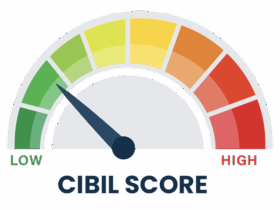When we trade-in options, we are aware that there is a level of risk involved, yet we continue to do so in the hopes of winning a jackpot, similar to the game above. Advanced options traders, on the other hand, typically treat options as a hedging or planning tool, intending to maximize profits while limiting losses. That is precisely where one desires to be!
In actuality, some option trading techniques exist, and these option trading strategies are built so that they restrict the risk quotient while opening the door to limitless profits.
We’ll go through option trading methods that every trader should know if they’re going to trade options. Also, you can use share market app for better understanding and trading.
Buying calls or put options, selling calls or put options, or both for the objective of limiting losses and achieving infinite profits are all examples of option trading strategies. They use one or more combinations to achieve the most excellent feasible result depending on our given parameters.
Put options offer the owner the right, but not the responsibility, to sell the underlying stock at a pre-determined price by a specific expiration period. In contrast, call options give the owner the right, but not the obligation, to buy the underlying stock.
Bullish, bearish, and neutral option trading techniques can be bullish, bearish, or neutral. Until now, it sounded intriguing? There’s a little more to pique your interest.
Types of option trading strategies:
Bull Call Spread:
A bull call spread is a bullish options trading strategy in which one At-The-Money (ATM) call option is purchased, and the other Out-Of-The-Money call option is sold.
It’s important to remember that both calls should have the same underlying stock and expiration date.
Profit is made when the price of the underlying stock rises, which is equal to spread minus net debit, and loss is incurred when the cost of the underlying stock falls, which is similar to net debit.
The Net Debt is the Premium Paid for a Lower Strike minus the Premium Received for a Higher Strike. The difference between the higher and lower strike prices is the spread.
When traders are not highly bullish on a stock, this approach is an excellent alternative to just buying a call option.
- Bull Put Spread
This is one of the bullish option trading techniques that options traders can use if they are bullish on the underlying asset’s movement.
Instead of buying calls, we buy puts in this strategy, identical to the bull call spread. Buying one OTM Put option and selling one ITM Put option is the basis of this approach.
It’s important to remember that both puts should have the same underlying stock and expiration date.
A bull put spread is created for a net credit or net amount received, and it earns profit from a rising stock price that is limited to the net credit received.
On the other hand, the potential loss is restricted when the stock price falls below the long put’s strike price.
Call Ratio Back Spread:
The Call Ratio Back Spread is one of the most basic option trading strategies, and it is used when a company or index is exceptionally bullish.
Traders can make unlimited profits when the market rises and restricted gains when the market falls with this method. If the market stays within a specific range, the trader loses money. In other words, traders can earn in either direction as the market moves.
This is a three-legged strategy in which you buy two OTM call options and sell one ITM call option.
- Synthetic Call
A synthetic call is one of the option trading methods employed by traders who have a long-term positive outlook of the stock but are concerned about the downside risks at the same time.
This method has an endless earning potential while posing a little risk.
The technique entails purchasing, putting options on the stock we own and having a bullish outlook. If the price of the underlying rises, we will profit, while if the price falls, our loss will be restricted to the Premium paid for the put option.
The Protective Put options strategy is similar to this one.
- Bear Call Spread
The Bear Call Spread is a two-leg option trading strategy used by options traders who have a “moderately gloomy” outlook on the market.
This technique entails purchasing one out-of-the-money call option with a higher strike price and selling one with a lower strike price. It’s important to note that both calls should have the same underlying stock and expiration date.
A bear call spread is constructed for the net credit when the stock prices fall, and gains are made from this method. The distance minus net credit is the maximum potential profit, while the maximum possible loss is the spread minus net credit. The Net Credit is calculated by subtracting the Premium Paid from the Premium Received.
- Strip
A strip is a bearish options strategy that buys one ATM Call and two ATM Puts.
It’s important to note that these options should all be purchased on the same underlying, with the same strike price and expiration date.
Traders can profit when the underlying stock price makes a significant shift in either direction at the time of expiration. Still, in general, enormous profits are made when prices move down.









Leave a Reply